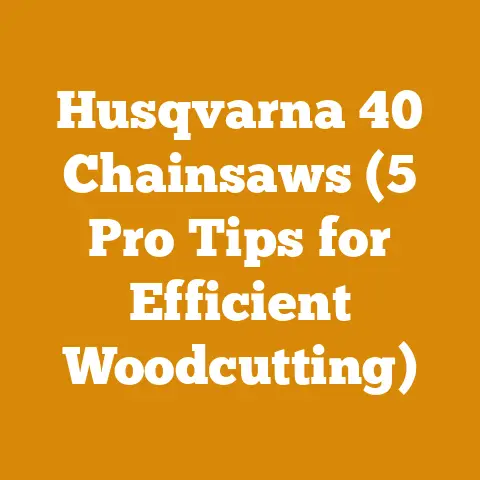Tap Poly-Weld Adhesive for Wood Repairs (5 Pro Tips)
Tap Poly-Weld Adhesive for Wood Repairs (5 Pro Tips)
As someone who’s spent countless hours in the woods, from the damp forests of the Pacific Northwest to the dry, sun-baked landscapes of the Southwest, I’ve learned that wood, despite its inherent strength, is vulnerable. Whether it’s rot, insect damage, or simply wear and tear, wood eventually needs repair. The specific challenges vary by region. In wetter climates, preventing rot is paramount, while in drier areas, checking and splitting are more common concerns. Regardless of location, having a reliable adhesive is crucial. Poly-weld adhesives have become my go-to for many wood repairs, offering a strong, durable bond that often surpasses the original wood’s strength. Over the years, I’ve developed a few pro tips to maximize their effectiveness, and I’m eager to share them with you.
Understanding Poly-Weld Adhesives: A Logger’s Perspective
Poly-weld adhesives, often referred to as polyurethane adhesives, are a class of synthetic resins known for their exceptional bonding strength, water resistance, and versatility. Unlike traditional wood glues, they can bond a wider range of materials, including wood, metal, plastic, and even concrete. This makes them incredibly useful on the job site and in my workshop.
My first experience with poly-weld was repairing a badly damaged handle on an antique axe. The wood was cracked and splintered, and I doubted any adhesive could restore it. But after careful preparation and application of a poly-weld adhesive, the handle was stronger than ever. That’s when I realized the potential of this stuff.
Tip #1: Preparation is Paramount – The 80/20 Rule
In my experience, successful wood repair is 80% preparation and 20% application. This means taking the time to properly clean, dry, and prepare the surfaces you’re bonding. Neglecting this step is the most common mistake I see, and it inevitably leads to a weaker bond.
Surface Cleaning: Start by removing any loose debris, dirt, old paint, or varnish from the wood surface. I prefer using a combination of methods:
- Scraping: A sharp scraper, like a cabinet scraper, is excellent for removing old finishes without damaging the wood.
- Sanding: Use sandpaper to create a slightly roughened surface. This provides the adhesive with more “tooth” to grip onto. I typically start with 80-grit sandpaper and work my way up to 120-grit.
- Solvent Cleaning: Wipe down the surface with a solvent like denatured alcohol or acetone to remove any remaining grease or oil. Make sure the solvent is compatible with the type of wood you’re working with.
Drying: Poly-weld adhesives require a slightly moist surface to cure properly. However, excessively wet wood will weaken the bond. The ideal moisture content is between 12% and 20%. You can use a moisture meter to check the moisture content. If the wood is too dry, lightly dampen it with a sponge. If it’s too wet, allow it to air dry for a few hours.
Clamping: Before applying the adhesive, dry-fit the pieces to ensure they align properly. Clamping is essential for achieving a strong bond. Gather your clamps and practice clamping the pieces together before applying the adhesive. This will save you time and frustration later.
Example: I once tried to rush a repair on a rotted section of a log cabin. I skipped the thorough cleaning and sanding, and the adhesive failed within a few months. Lesson learned: preparation is non-negotiable!
Takeaway: Don’t underestimate the importance of surface preparation. Clean, dry, and slightly roughened surfaces are essential for a strong, durable bond.
Tip #2: Choosing the Right Poly-Weld Adhesive: A Deep Dive
Not all poly-weld adhesives are created equal. Different formulations offer varying levels of strength, water resistance, and curing times. Selecting the right adhesive for your specific project is crucial.
Types of Poly-Weld Adhesives:
- One-Part Polyurethane Adhesives: These are the most common type and are generally easy to use. They cure through a reaction with moisture in the air and the wood.
- Two-Part Polyurethane Adhesives: These offer superior strength and water resistance compared to one-part adhesives. They require mixing two components together before application.
- Foaming Polyurethane Adhesives: These expand as they cure, filling gaps and providing excellent adhesion to irregular surfaces. They’re ideal for repairing cracks and voids in wood.
Factors to Consider:
- Wood Type: Some adhesives bond better to certain types of wood. For example, hardwoods like oak and maple may require a stronger adhesive than softwoods like pine and cedar.
- Environmental Conditions: If the repair will be exposed to moisture, choose a water-resistant adhesive. For exterior applications, look for an adhesive that is UV-resistant.
- Curing Time: Consider the curing time of the adhesive. Some adhesives cure in as little as a few hours, while others may take 24 hours or more.
- Gap-Filling Ability: If you’re bonding pieces with gaps or irregularities, choose a foaming polyurethane adhesive or an adhesive with good gap-filling properties.
- Strength Requirements: For structural repairs, choose a high-strength adhesive. For cosmetic repairs, a lower-strength adhesive may suffice.
My Recommendations:
- For general wood repairs: I often use Gorilla Glue Polyurethane Adhesive. It’s readily available, strong, and water-resistant.
- For exterior applications: I recommend Titebond Polyurethane Liquid Glue. It’s specifically formulated for outdoor use and offers excellent UV resistance.
- For gap-filling: Loctite PL Premium Polyurethane Construction Adhesive is my go-to choice. It expands slightly as it cures, filling gaps and providing a strong bond.
Case Study: I once used a standard wood glue to repair a fence post that was exposed to constant moisture. The glue failed within a year. After switching to a polyurethane adhesive, the repair lasted for over five years and is still going strong.
Takeaway: Carefully consider the type of wood, environmental conditions, and strength requirements when choosing a poly-weld adhesive.
Tip #3: Mastering the Application Technique: Minimizing Mistakes
Applying poly-weld adhesive correctly is crucial for achieving a strong and durable bond. Here are some tips to minimize mistakes and maximize effectiveness:
Dosage: Apply a thin, even layer of adhesive to both surfaces being bonded. Avoid applying too much adhesive, as this can weaken the bond. A good rule of thumb is to apply just enough adhesive to create a slight squeeze-out when the pieces are clamped together.
Application Methods:
- Brush: A brush is ideal for applying adhesive to large, flat surfaces.
- Roller: A roller can be used to apply adhesive to textured surfaces.
- Spreader: A spreader is useful for applying adhesive to edges and corners.
- Applicator Bottle: Applicator bottles are great for precise application in tight spaces.
Clamping Pressure: Apply firm, even clamping pressure to the pieces being bonded. The amount of clamping pressure required will vary depending on the type of adhesive and the wood being bonded. Refer to the adhesive manufacturer’s instructions for specific recommendations. I typically use clamps spaced every 6-8 inches for even pressure distribution.
Curing Time: Allow the adhesive to cure for the recommended time. Avoid disturbing the pieces during the curing process. Temperature and humidity can affect curing time. Cooler temperatures and higher humidity may slow down the curing process.
Clean-Up: Clean up any excess adhesive before it cures. Use a damp cloth or a solvent recommended by the adhesive manufacturer. Cured polyurethane adhesive can be difficult to remove.
Common Mistakes to Avoid:
- Applying too much adhesive: This can create a weak bond and make clean-up difficult.
- Not clamping the pieces together: Clamping is essential for achieving a strong bond.
- Disturbing the pieces during the curing process: This can weaken the bond.
- Not cleaning up excess adhesive: Cured polyurethane adhesive can be difficult to remove.
- Using an expired adhesive: Check the expiration date on the adhesive container before use.
Example: I once applied too much polyurethane adhesive to a joint. The excess adhesive squeezed out and created a mess. More importantly, the bond was weaker than expected. I learned that less is often more.
Takeaway: Apply a thin, even layer of adhesive, clamp the pieces together firmly, and allow the adhesive to cure for the recommended time.
Tip #4: Addressing Common Wood Repair Challenges with Poly-Weld
Poly-weld adhesives are incredibly versatile and can be used to address a wide range of wood repair challenges. Here are some common scenarios and how to tackle them:
Rot Repair: Rot is a common problem, especially in damp environments. To repair rot, first, remove all the decayed wood with a chisel or scraper. Treat the remaining wood with a wood preservative to prevent further rot. Fill the void with a wood filler mixed with a poly-weld adhesive. Sand the filler smooth and apply a finish.
Crack Repair: Cracks can occur in wood due to drying, stress, or impact. To repair a crack, first, clean the crack thoroughly. Apply a thin layer of poly-weld adhesive to the crack and clamp the pieces together. For wider cracks, you may need to use wood shims to fill the gap.
Splinter Repair: Splinters can be unsightly and can weaken the wood. To repair a splinter, first, carefully remove the splinter. Apply a small amount of poly-weld adhesive to the area and clamp the splinter back in place.
Veneer Repair: Veneer can peel or chip over time. To repair veneer, first, clean the area thoroughly. Apply a thin layer of poly-weld adhesive to the back of the veneer and press it firmly into place. Use a veneer roller or a smooth block of wood to apply even pressure.
Loose Joints: Loose joints can make furniture wobbly and unstable. To repair a loose joint, first, disassemble the joint. Clean the surfaces thoroughly. Apply a thin layer of poly-weld adhesive to the joint and reassemble it. Clamp the joint firmly until the adhesive cures.
Warped Wood: While poly-weld adhesives can’t magically straighten warped wood, they can help to secure it in a desired position. By carefully applying adhesive and using clamps or braces, you can often minimize the effects of warping.
Unique Situations:
- Repairing Musical Instruments: I once used a poly-weld adhesive to repair a crack in the soundboard of an acoustic guitar. The adhesive’s flexibility and strength made it ideal for this delicate repair.
- Rehabilitating Antique Furniture: Poly-weld adhesives can be used to restore antique furniture to its former glory. Their ability to bond to a variety of materials makes them perfect for repairing damaged veneer, loose joints, and broken components.
Takeaway: Poly-weld adhesives can be used to address a wide range of wood repair challenges, from rot and cracks to splinters and veneer damage.
Tip #5: Safety First – A Logger’s Code
Working with wood and adhesives can be dangerous if proper safety precautions are not taken. As someone who’s seen firsthand the consequences of neglecting safety, I can’t stress this enough.
Personal Protective Equipment (PPE):
- Safety Glasses: Always wear safety glasses to protect your eyes from flying debris and adhesive splashes.
- Gloves: Wear gloves to protect your hands from the adhesive. Polyurethane adhesives can irritate the skin.
- Respirator: If you’re working in a poorly ventilated area or sanding wood, wear a respirator to protect your lungs from dust and fumes.
Ventilation: Work in a well-ventilated area to avoid inhaling fumes from the adhesive.
Material Safety Data Sheets (MSDS): Read the MSDS for the adhesive you’re using. The MSDS provides information on the hazards associated with the adhesive and how to handle it safely.
Fire Safety: Polyurethane adhesives are flammable. Keep them away from heat, sparks, and open flames.
Tool Safety: Use caution when using tools such as chisels, scrapers, and sanders. Follow the manufacturer’s instructions for safe operation.
First Aid: Keep a first-aid kit handy in case of accidents.
Responsible Disposal: Dispose of adhesive containers and used materials properly. Follow local regulations for hazardous waste disposal.
My Personal Experience: I once witnessed a colleague suffer a serious eye injury while working with wood. He wasn’t wearing safety glasses, and a piece of wood flew into his eye. The injury could have been prevented with proper PPE.
Takeaway: Always prioritize safety when working with wood and adhesives. Wear appropriate PPE, work in a well-ventilated area, and follow the manufacturer’s instructions for safe handling and disposal.
By following these five pro tips, you can maximize the effectiveness of poly-weld adhesives and achieve strong, durable wood repairs that will last for years to come. Remember, preparation is key, choose the right adhesive for your project, master the application technique, address common wood repair challenges with confidence, and always prioritize safety. Now, get out there and start repairing!






